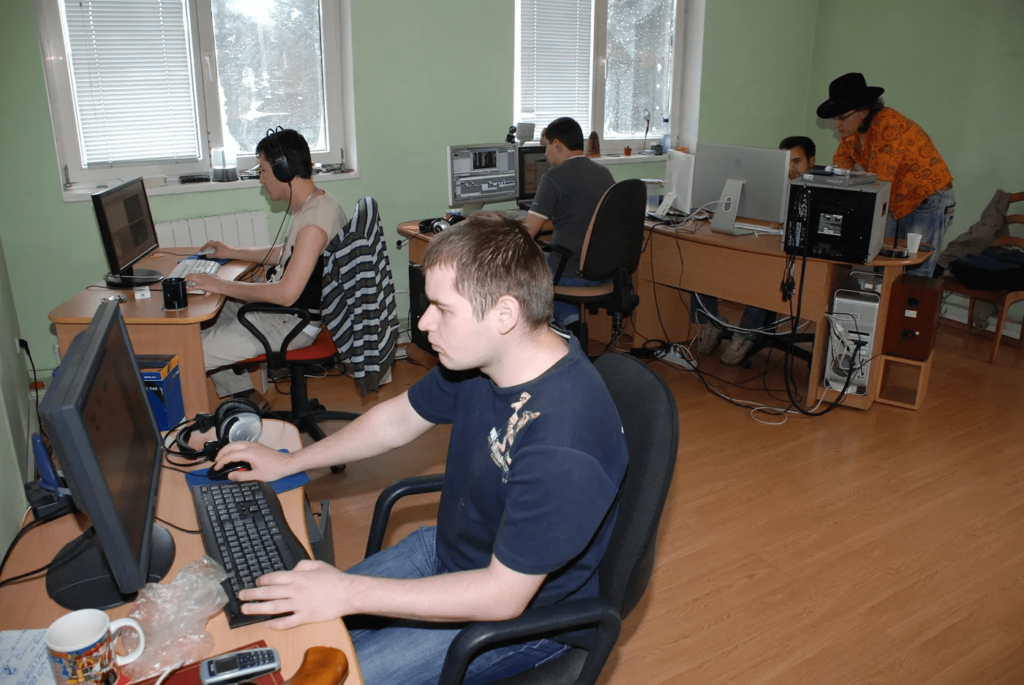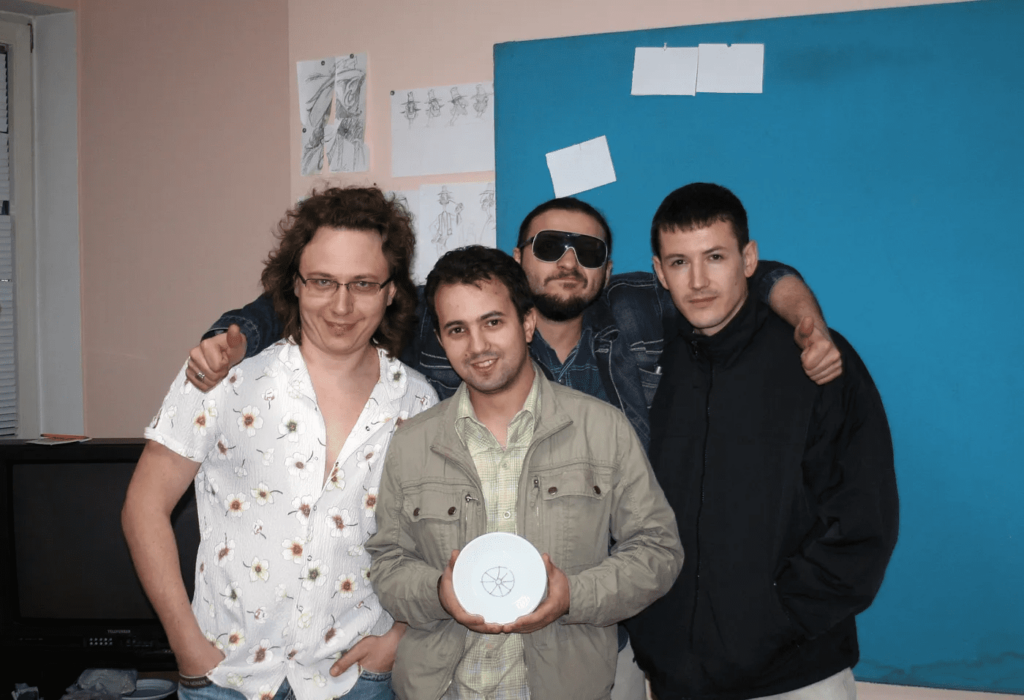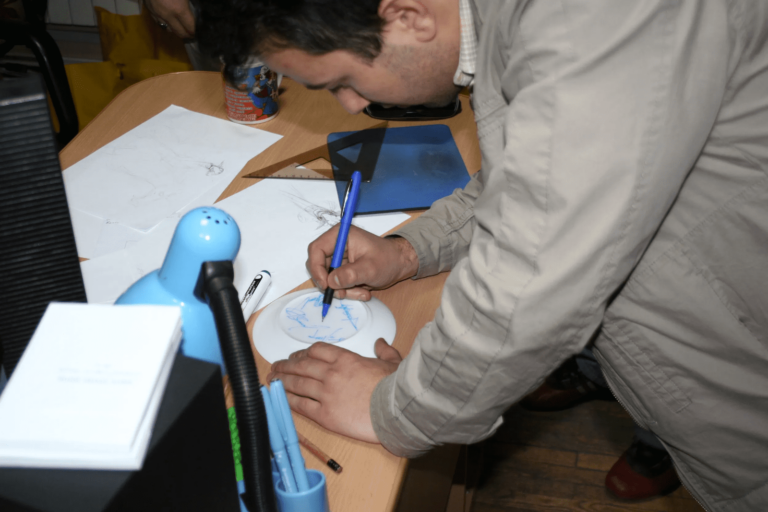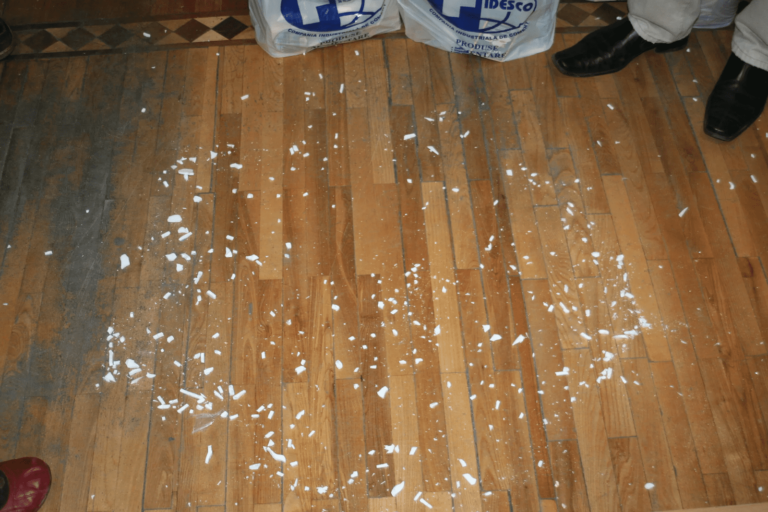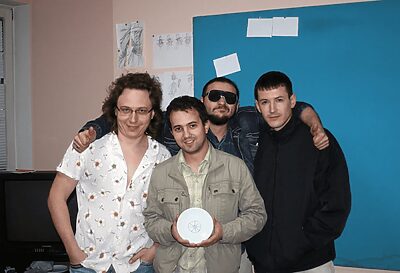This morning I was driving to work. And suddenly I realized that I no longer want to go there, that I am not interested in just making high-quality commercials and videos. After all, I haven’t seen my colleagues’ eyes light up with enthusiasm for quite a long time.
Agencies, clients, approvals, pre-production meetings, deadlines and CPS – all this has been going on at breakneck speed in our studio lately. Yes, we’re pros, and we do quality visuals, we haven’t had any dissatisfied clients. Except for ourselves…
Here’s our demo reel (or portfolio) at the time:
That’s when I realized that we couldn’t stay just a production house with an interesting portfolio anymore. Man, that’s not what I built the company for!
I got out of the cab, went up to the third floor, went into the guys’ office and told them the news:
“I’ve decided to make the first Moldovan 3D cartoon!”
The Plate
Everyone slowly faced in my direction, unable to believe their ears. Like any 3D artist, they all dreamed of taking part in the creation of a cartoon, because advertising is boring and bragging to their children that you draw mayonnaise and beer commercials is the same as showing them graphs of the growth of profit in the transport industry.
Serdar (a professional classical animator from the Russian school, for whom animation is not a craft, but a Lifestyle) joyfully jumped up from his chair:
— I’m going to get a plate!
Note: In the world of filmmakers and animators there is a tradition – before the start of the project the whole crew signs a plate, then it is solemnly broken into a pile of pieces, neatly put it aside, and at the premiere, they glue it together and put it on the shelf. Beautiful…
So, we decided to do the same thing:
But it’s easier said than done, especially if you don’t understand a thing. In general terms, we saw our work this way: we quickly and decisively come up with a script, cheerfully draw the characters and the world around us, and then the formidable and all-powerful director theatrically pronounces: “Come to life!” The characters, oddly enough, come to life, the plot happens, a vivid climax, the audience in awe, the credits.
We could already smell the glory, feel the red carpet beneath our feet, and the pleasant heaviness of the coveted Oscar in our hands.
It turned out to be a little bit more complicated than that.
No plan, no result
It was this slogan that replaced the well-known words from our childhood, “Don’t stick your fingers in the socket!” and “Cross the road at the green light!” If someone stood for election with such a slogan, all Moldovan animators would have voted for him or her. If we were to translate the word pipeline from the cartoonist’s English into common English, it would mean “production pipeline”.
Pipeline is needed for a clear understanding of the sequence and interconnection of cartoon production processes. It turns out that our scheme, which we presented at the beginning, can easily be discarded in trash. Why? Because there is almost no linear process in the production of cartoons: you cannot do one of the steps first, and then take up the other. Here everything is interconnected. You have to stop a horse at a gallop, and enter a burning house at the same time. Of course, we struggled, saying, come on, everything is possible, but in the end, we developed our own pipeline. For your understanding, it all looks something like this:
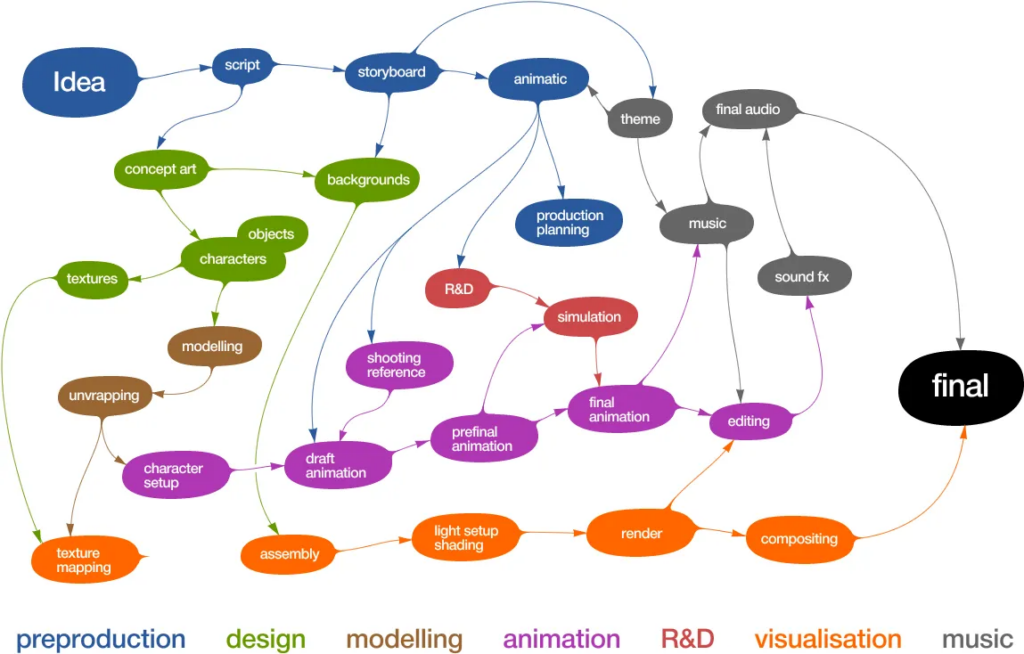
Well, let’s start with the script…
